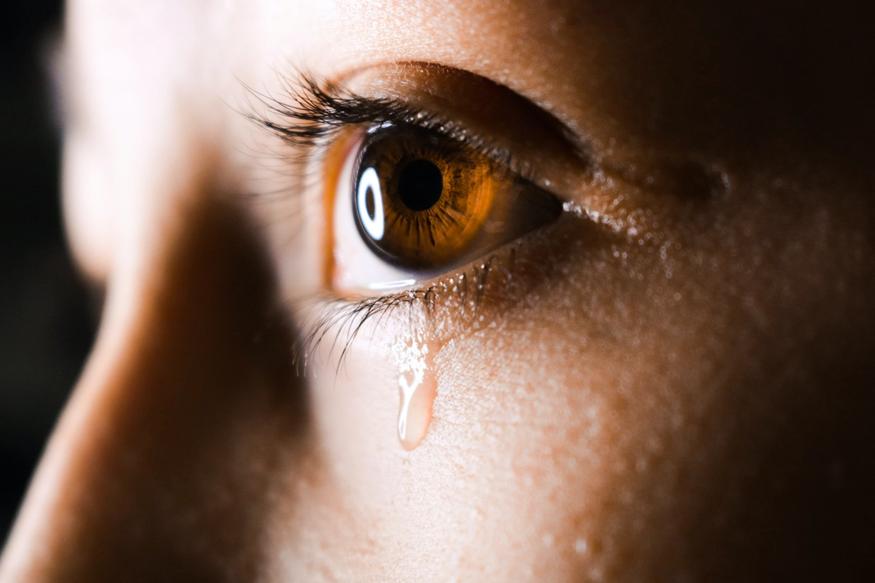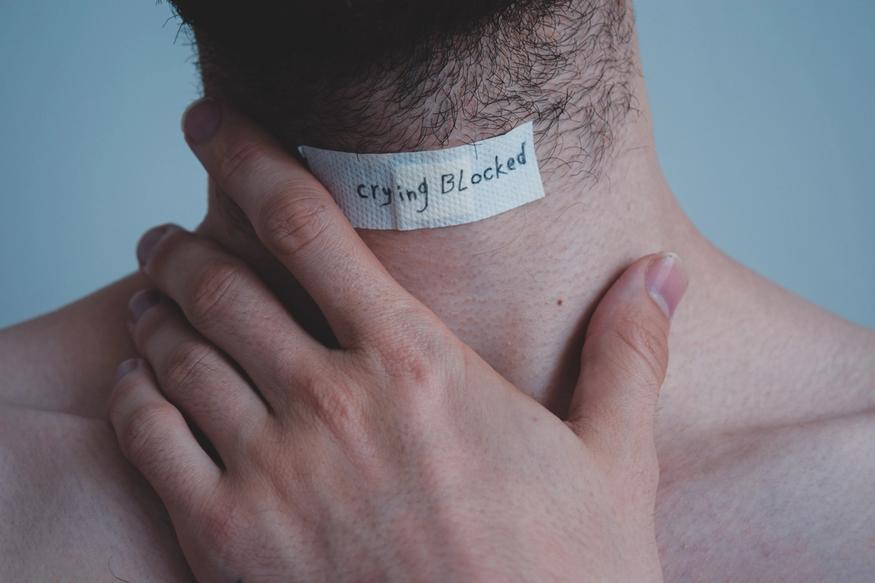Be a Cry Baby!
Published on 7/29/2020Somehow as a society, we collectively decided that crying is wrong. That crying is a weakness. I don’t know who first suggested it, or when this vote occurred, but all I know is that I feel the effects of it weekly. I am a hypersensitive person. I have been living with depression and various other mental health issues for eight years now. I am considered to be a drama queen by my friends, to be over-sensitive and to be emotional. These things may all be true. I cry easily.

I cry at short youtube videos of a dog being reunited with its owner. I cry at certain songs that immediately evoke a pain within. Sometimes I cry when I wake up, because the day has just started and yet a weight is crushing me already. I cry whenever I think of my father, who passed away almost two years ago. I cry when I feel embarrassed, confronted, anxious. I cry a lot. Too much, maybe, but I would never trade this for not crying at all.
Crying is good for us. Somewhere along the way we forgot this, and we instead vilified the act of releasing tears. But I hope to change that today, even if it is just to convince you that you are allowed to cry, and moreover that you should cry. Let’s get started.
The three types of tears
Firstly, let’s look deeper at the act of crying, because it isn’t just one thing. There are actually three different types of tears. We have reflex tears, which aim to clear debris from your eyes, such as smoke or dust. They’re a physical response without an emotional connection. Next we have continuous tears, these lubricate our eyes and protect them from infection. Again, a physical intention for crying. Finally, emotional tears - my favourite! Emotional tears often lack a physical basis to them, but they are still super healthy for us.
For example, whereas continuous tears are formed of 98% water, emotional tears actually contain stress hormones and other toxins. Studies suggest that crying intends to flush these negative substances out of your system.
Why do we benefit from crying?
For the purpose of this article, we’re focusing on emotional tears, and the benefits of them.
1. Detoxification
As mentioned, emotional tears release a multitude of toxins and stress hormones. They allow you to cleanse your system and improve your internal function. By holding in such tears, you are essentially holding in these negative substances, and worsening your levels of stress or dysfunction.
2. Self-soothe
Many of us have heard of parents allowing their baby to cry it out, in order to learn to self-soothe. This doesn’t change as an adult, as having a good cry still allows you to soothe yourself. Research has shown that crying activates our parasympathetic nervous system (PNS), which focuses on letting the body rest and digest. When you’ve finished a good cry, you often feel satisfied, content. That is because it takes several minutes of releasing tears to ignite the soothing effects, and give your body and mind the peace desired.
By crying, you’re allowing yourself to care for yourself. You’re finding comfort within yourself instead of someone else, and soothing your pain.
3. Support
But in contrast, crying can also raise a red flag for others. By crying, you’re clarifying the pain that you’re feeling and informing those around you that you need support. It’s a learned behaviour, to ignite a group effort, that we learned as babies. This is considered to be an interpersonal benefit of crying, as you build up a social support network when struggling.
I have a friend that I’ve known for over five years, and seen cry maybe once or twice. Then there have been times when she will finally let me know how much she is struggling, or how much a situation hurt her. And I honestly had no idea. I consider myself to be an intuitive person but since she works hard to bottle up her emotions, I don’t know when she needs my comfort and when she is actually fine. She is working on feeling comfortable crying, and not hiding it all from us.
If someone is hurting you in their words, don’t consider crying to be an act of weakness. It informs them that they are going too far, that you are being affected right now. It is a strength to signal this, and to clarify your boundaries.
4. Pain relief
Before crying, I can feel like I am in physical pain, like there is an ache I can’t soothe. But after crying, I feel lighter and released from the ache. Crying for a long period releases oxytocin as well as endogenous opioids- better known as endorphins. These are kind of the good drugs of the brain, the natural ecstasy. They can help to ease both physical and emotional pain, as endorphins can aid in numbing the body while oxytocin produces calming sensation. Think of crying as a natural painkiller, we all love homeopathic remedies, right?
5. Restore balance
Our body can struggle to work through intense emotions, it can easily feel overwhelming for us. We don’t only cry when we’re sad, we also cry from happiness, fear, shock and more. Crying allows us to deal with this strong emotion and restore an emotional equilibrium once more.
6. Mood improvement
I would struggle to name something that feels as satisfying as the emotional release of crying, the way it soothes you, even lifts your spirits. This particularly happens with sobbing, as you take numerous quick breaths of cool air when you sob. The cooler air allows you to regulate and even lower the temperature of your brain. Our body and mind finds a cool brain to be more pleasurable than a warm one, and so our mood is elevated.
7. Acknowledgement
When we take a minute to cry, to release the tears and stay in this moment of pain, we are acknowledging how we feel. We are working through the emotions, releasing them. If you bottle up your tears and emotions, don’t deal with what is happening and instead avoid it to ‘stay strong’, they don’t go anywhere. They sit within you and they brew. And eventually, your mental health takes the toll for those repressed tears.
When is crying bad?
You should not want to cry all the time and continuously. If crying is not providing the benefits mentioned above, if there is no relief after your sob session or no end in sight, then this may be a sign of something more. Don’t rule out the possibility of depression and always seek professional assistance.
Cry when you feel the tears come. Don’t bottle up emotions, but certainly don’t force them. And don’t feel shame for them.

Big boys don’t cry
There are many things we still need to normalise for men, and one of these is crying. As women, we’re given a bit more space to be in touch with our feelings and cry, although it can quickly get us written off. But men aren’t given the room to express pain and sadness, and then we wonder why depression and suicide rates are higher for males?
In my home country, a study done at Tilburg University looked into the gender differences in crying. They found that an average American woman would cry 3.5 times per month, while an American man would cry 1.9 times per month. Women could have more things to cry about, but that’s not the issue here. The issue is that we are raising boys to believe that they can’t cry. That showing emotion is somehow a female thing? This leads to so many more issues and really needs to be addressed.
If you have a son, teach them that they are allowed to cry. That they are allowed to welcome their emotions, to feel and work through them instead of repressing them until it becomes too much. Big boys cry! Big boys cry so much.
Let’s stop associating female terms to showing emotion. Don’t “be a man” and repress things, be a woman and cry your heart out! Crying today, taking a moment to address your feelings and acknowledge them, can save you pain tomorrow. Get in touch with your emotional self for the sake of positive mental health.
How can I allow myself to cry?
I find it hard to cry in my moments of grief. I struggle to release those tears, I fear them. It can be hard to give yourself permission to cry, to not let societal shame cloud the moment and to not push on and distract. But slowly you can build up the courage to cry, to teach yourself the good in it and check in with yourself for that moment.
It starts by crying alone. If you feel tears come, then step back from what you’re doing. Go sit or lie down, no distractions. Maybe close your eyes even, and focus on the emotions within you. Stay in the moment, allow them to fill your body. Consider where in your form you feel them. Is it your chest, your stomach or elsewhere? Focus on the experience of your body, from fingers to toes.
Consider the emotions that you feel now, as they are usually more complex than simple sadness. Is it guilt, longing, loneliness, fear or anger? Allow this emotion, accept it. Allow yourself to feel this way, it is not wrong to feel this way. You don't need an excuse to feel sad.
If you still struggle to release your tears and feel blocked, consider some assistance for crying. There might be a certain song or two that tap into your deepest emotions. For me, and I don’t know why, I cannot sing the first few lines of “All by myself” by Celine Dion without choking up. No clue when it started, but now I do know that. So when I need a good mope, I’ll play that song. Watch a sad movie perhaps, something that brings the tears quickly and without shame. Perhaps take a moment to journal, to write down how you feel. This form of free association can release thoughts you didn’t know you were having, just a pen in your hand scribbling without hesitation
Just let yourself exist in the sadness. Stop being so afraid of it and fighting against it. Give yourself the moment of sadness, as then you’ll feel the sadness less often as you work through it each time it visits. We often get so focused on feeling good and happy, that we forget those lows are what makes the highs feel so incredible.
Crying is a strength
Own your tears. There is no shame or weakness in releasing them, only in fighting them. The person quickly rubbing away their tears and choking them back is not stronger than the one who stares through them, defiant as they fall. Allow your tears to help you, aim to recognise the power of them. Check in with yourself, first when you begin to cry and then once you’ve had a good sob.
You’re feeling something in this moment, whether or not you let it out, it is still there. Crying doesn’t mean you’re sad, being sad means you cry, holding in tears means you’re still sad and for longer.
There is bravery in crying. There is a moment of being with yourself in your sadness or fear, recognising it and allowing it. Big girls cry, big boys cry, big non-binary individuals cry. Let’s stop trying to gender something that is human nature, that is an evolutionary tool to our benefit. Don’t leave the tool gathering dust on your belt, use it to your advantage.
Featured posts

Fleur
Welcome to Symptoms of Living! A place where I like to relieve myself of the barrage of thoughts and ideas filling my mind. Here I'll take a look at various topics, from books to BPD, series to self-harm, there's nothing that we can't, and shouldn't, talk about.
Having struggled with mental illness since the age of 15, one of the hardest parts was how alone I felt in it. While mental illness is beginning to be discussed more openly, and featured in the media, I still think there is room for improvement. So whether it is mental illness or merely mental health, a bad day or a bad year, let's make this a place to approach it and strip it back. Everyone has their own symptoms of living, and you certainly won't be the only one with it.
Would you like to receive my top monthly articles right to your inbox?
For any comments/questions/enquiries, please get in touch at:
info@byfleurine.com
I'd love to hear from you!